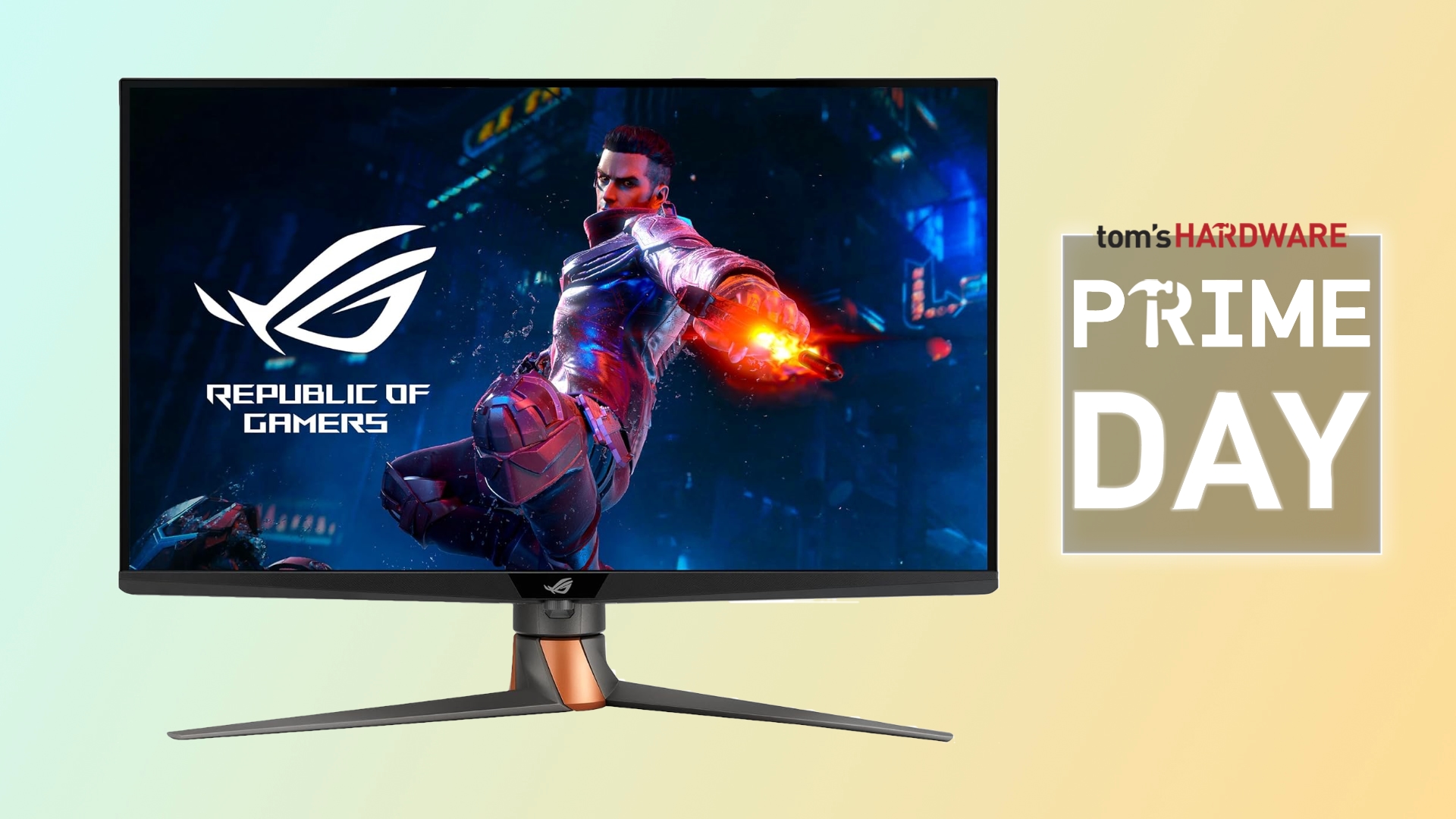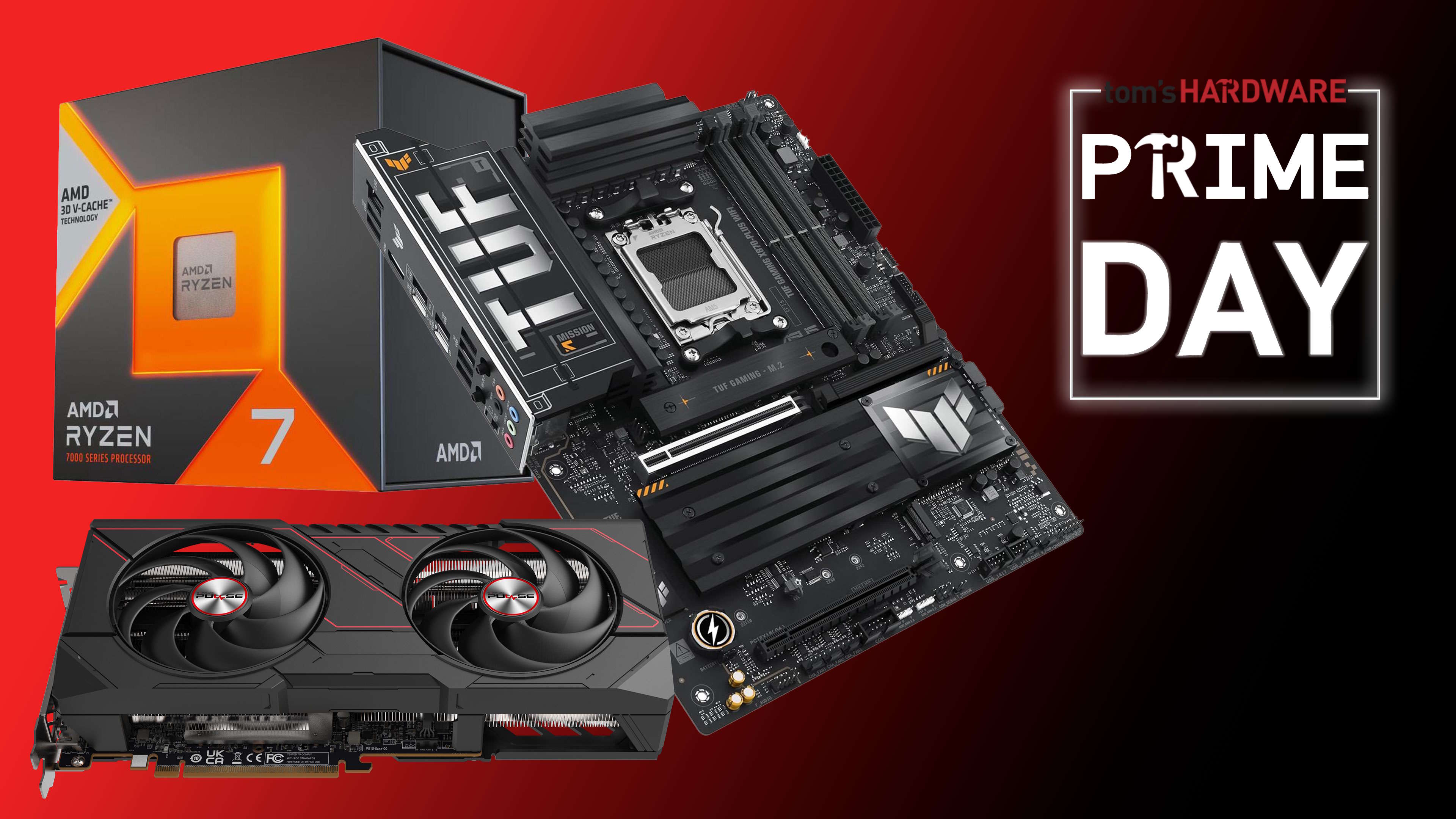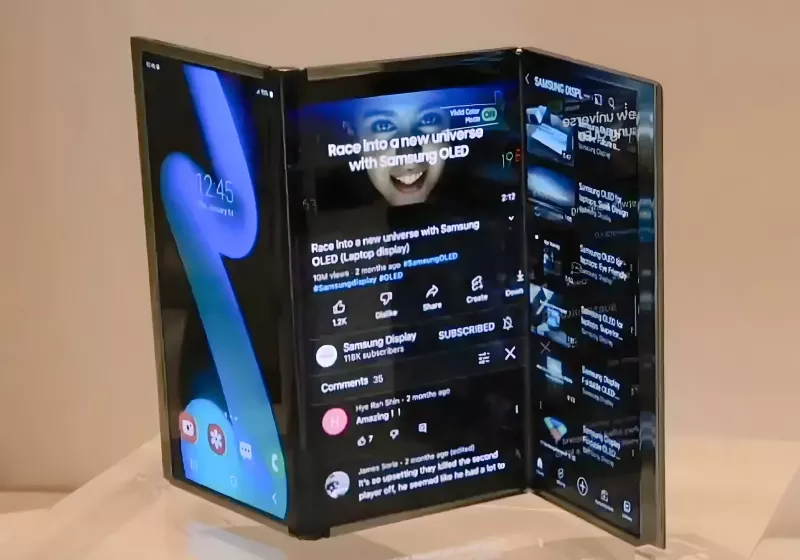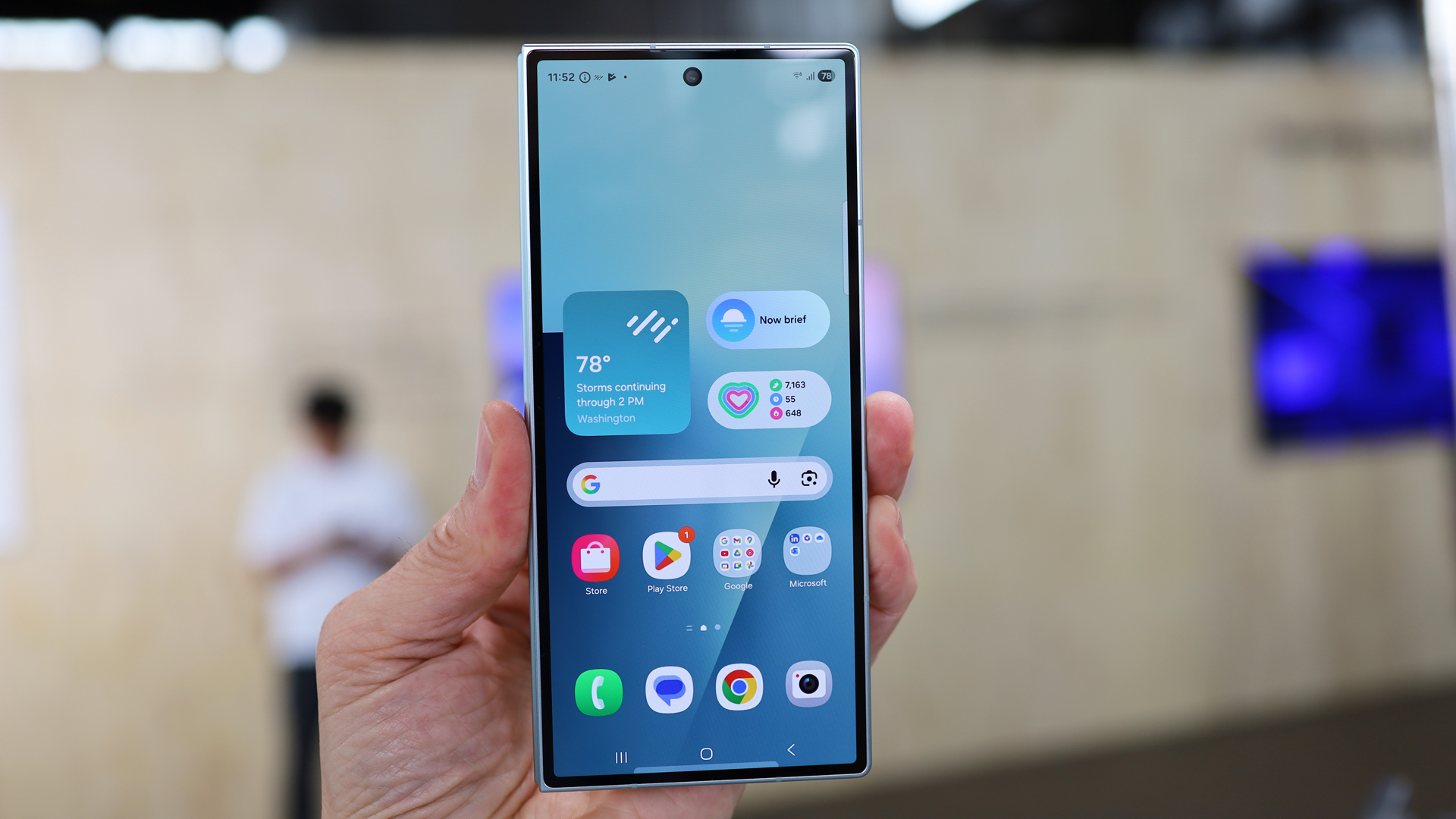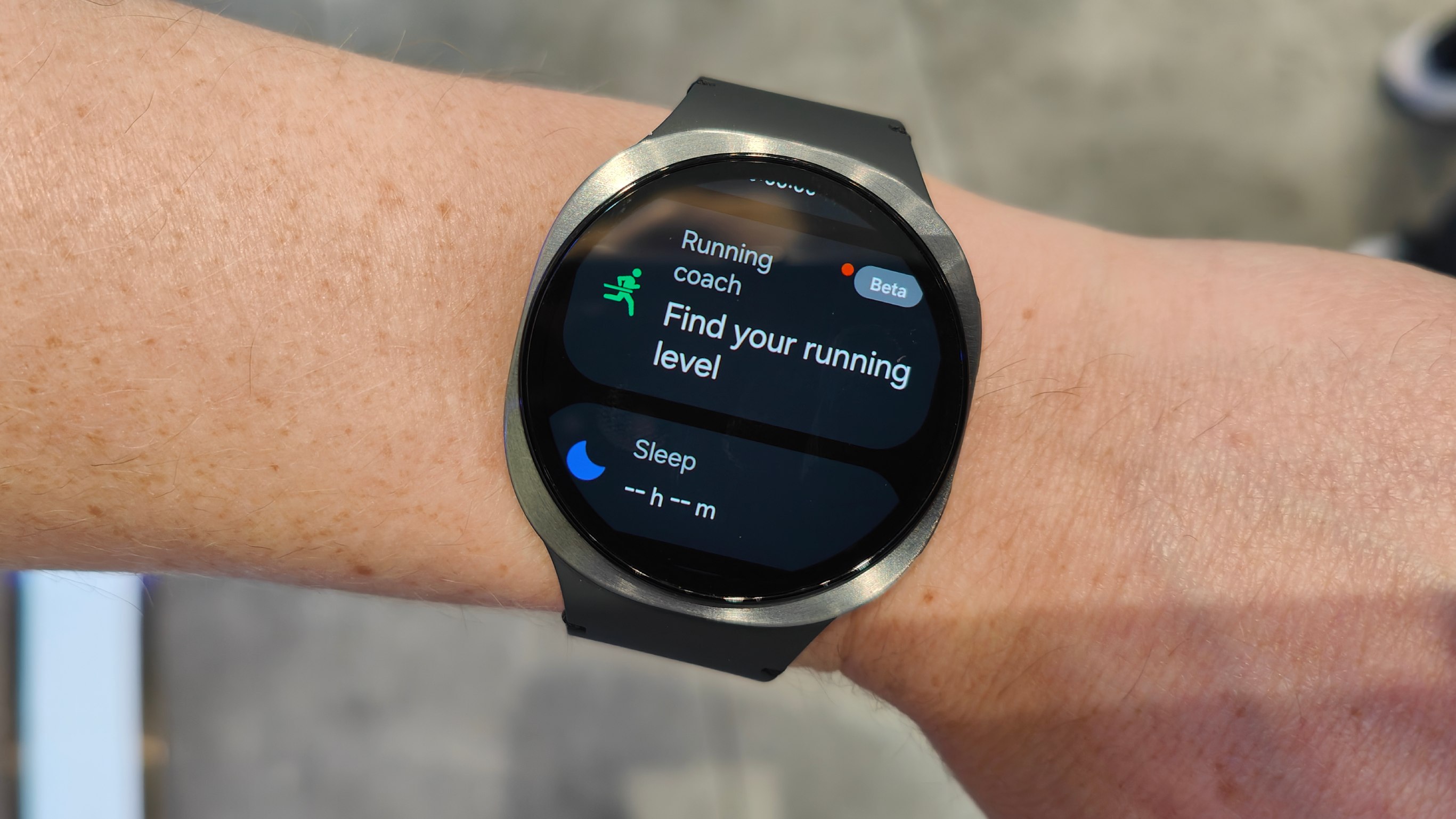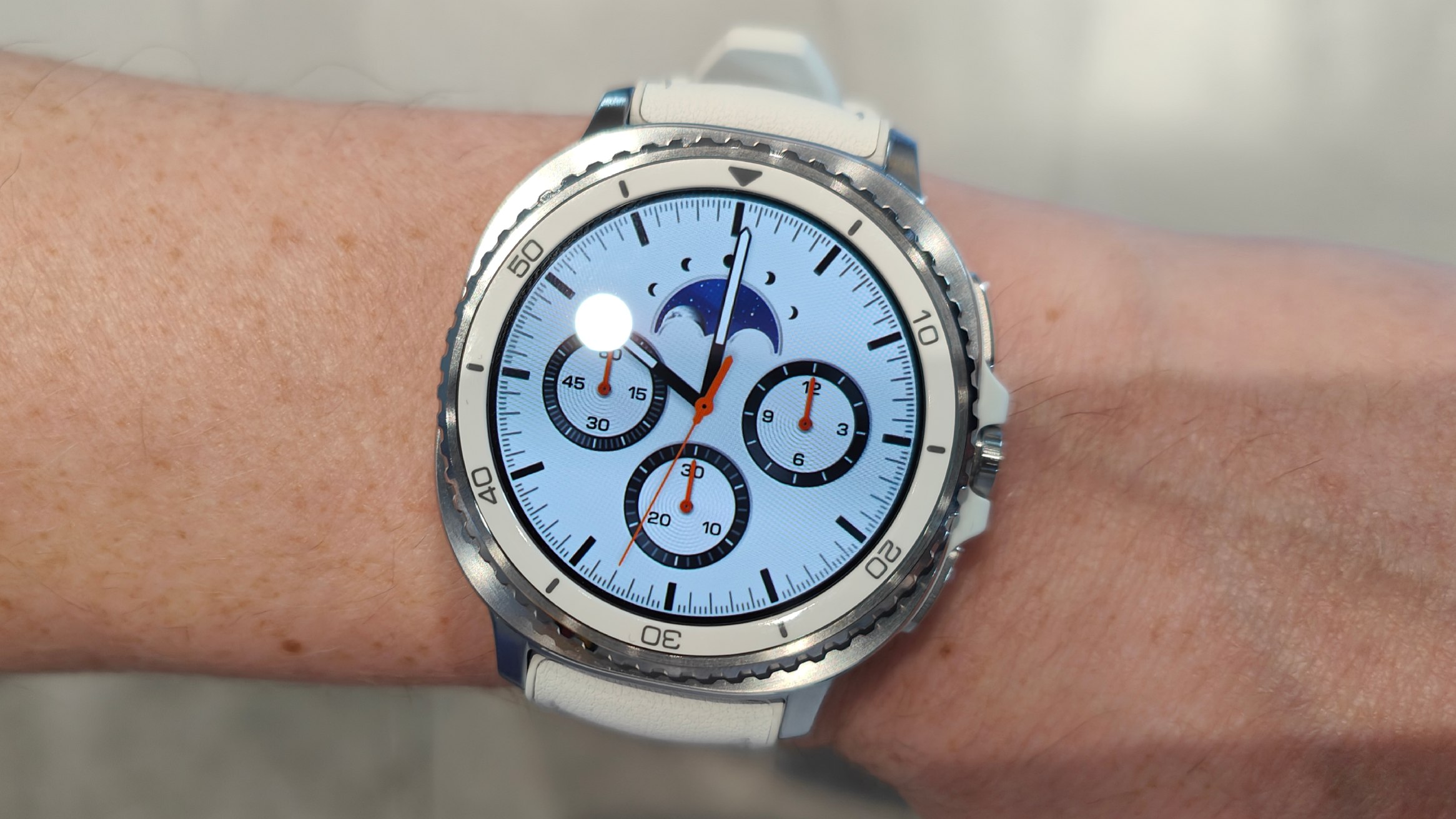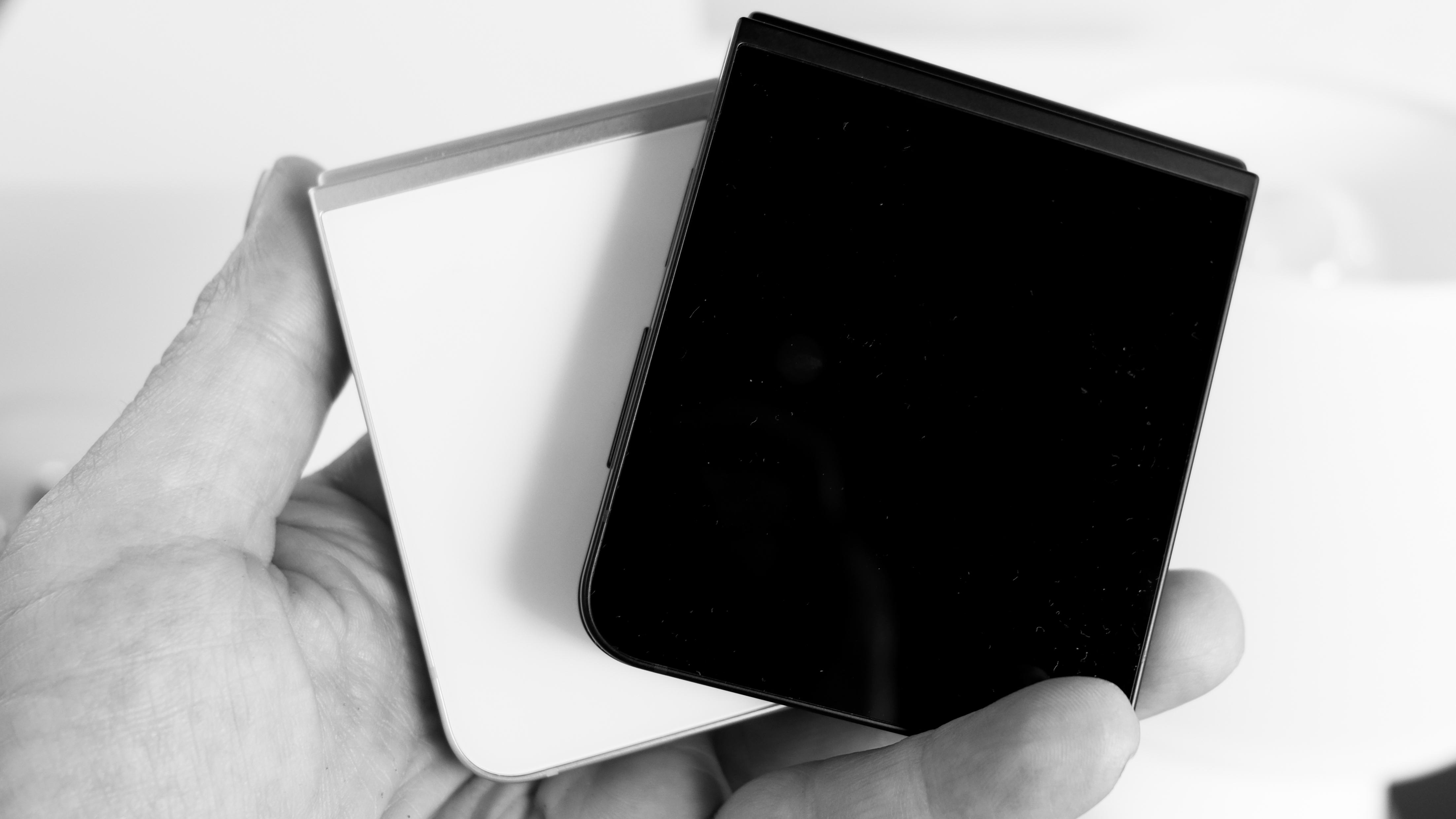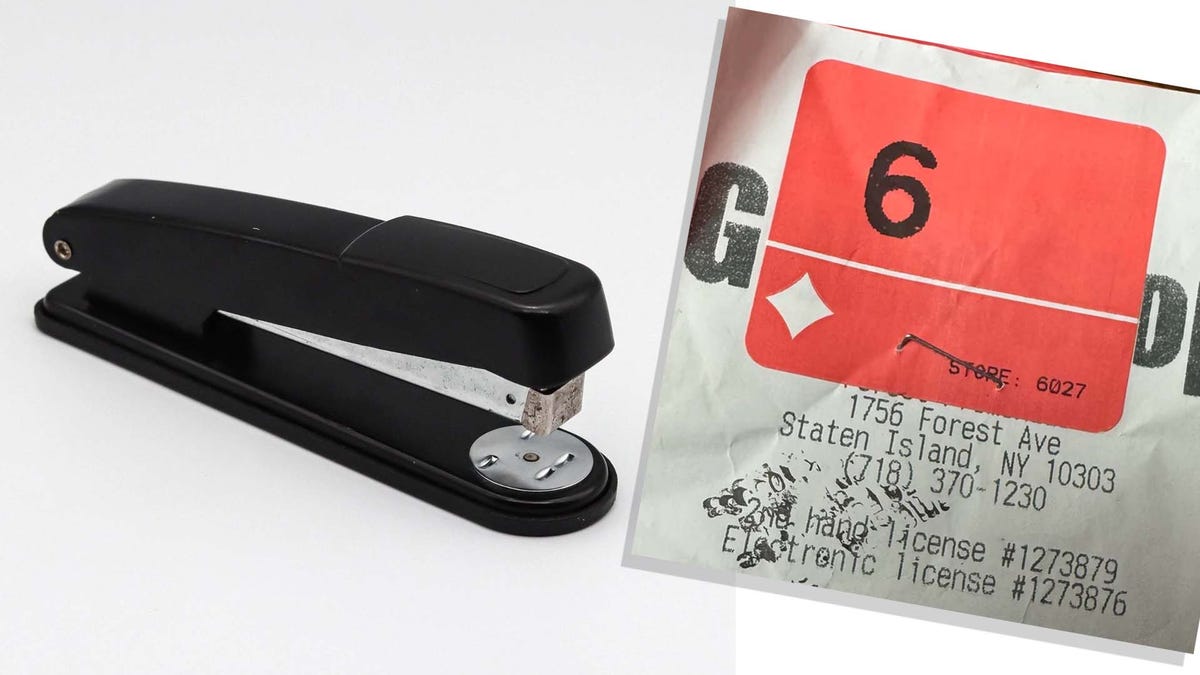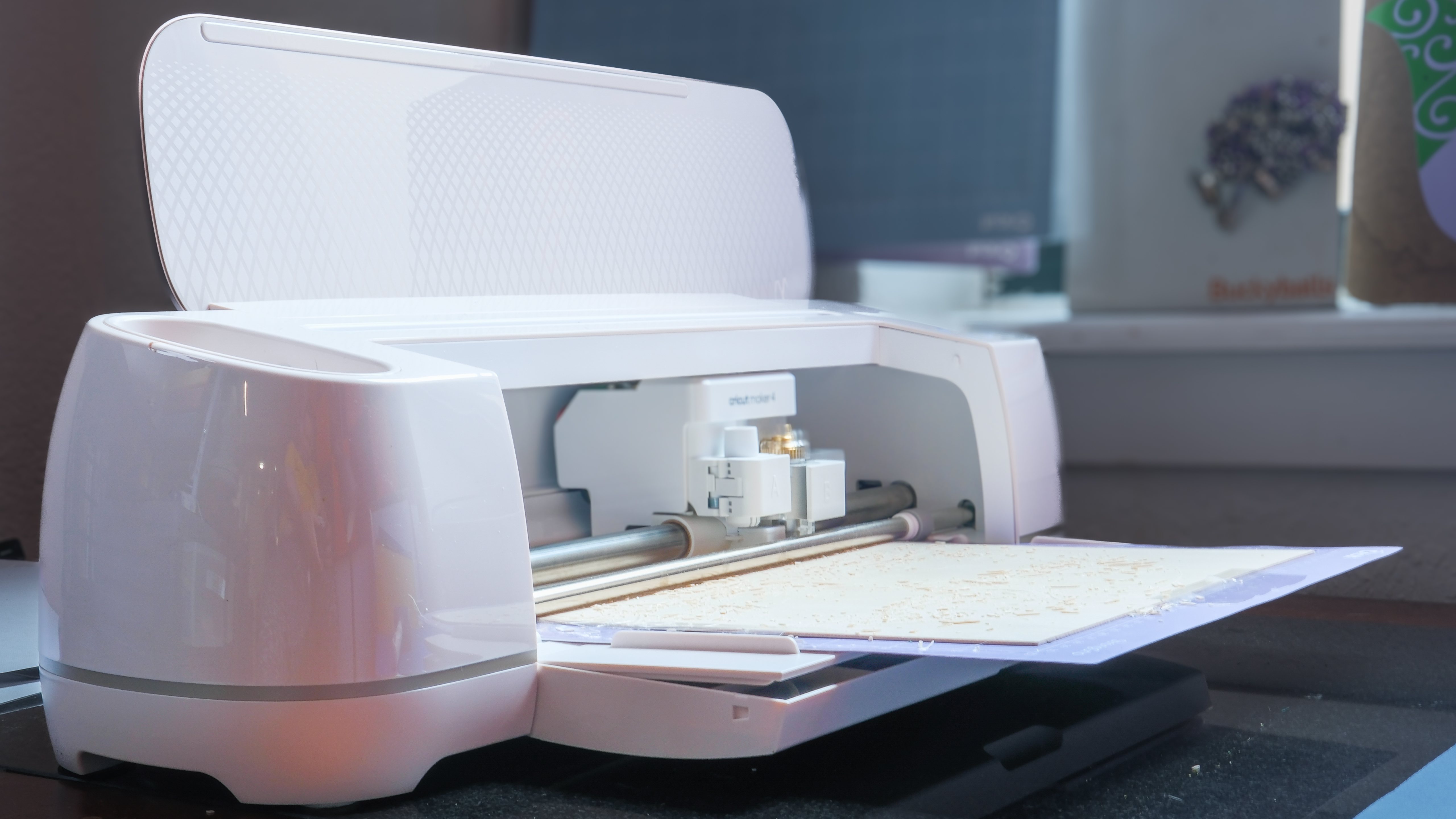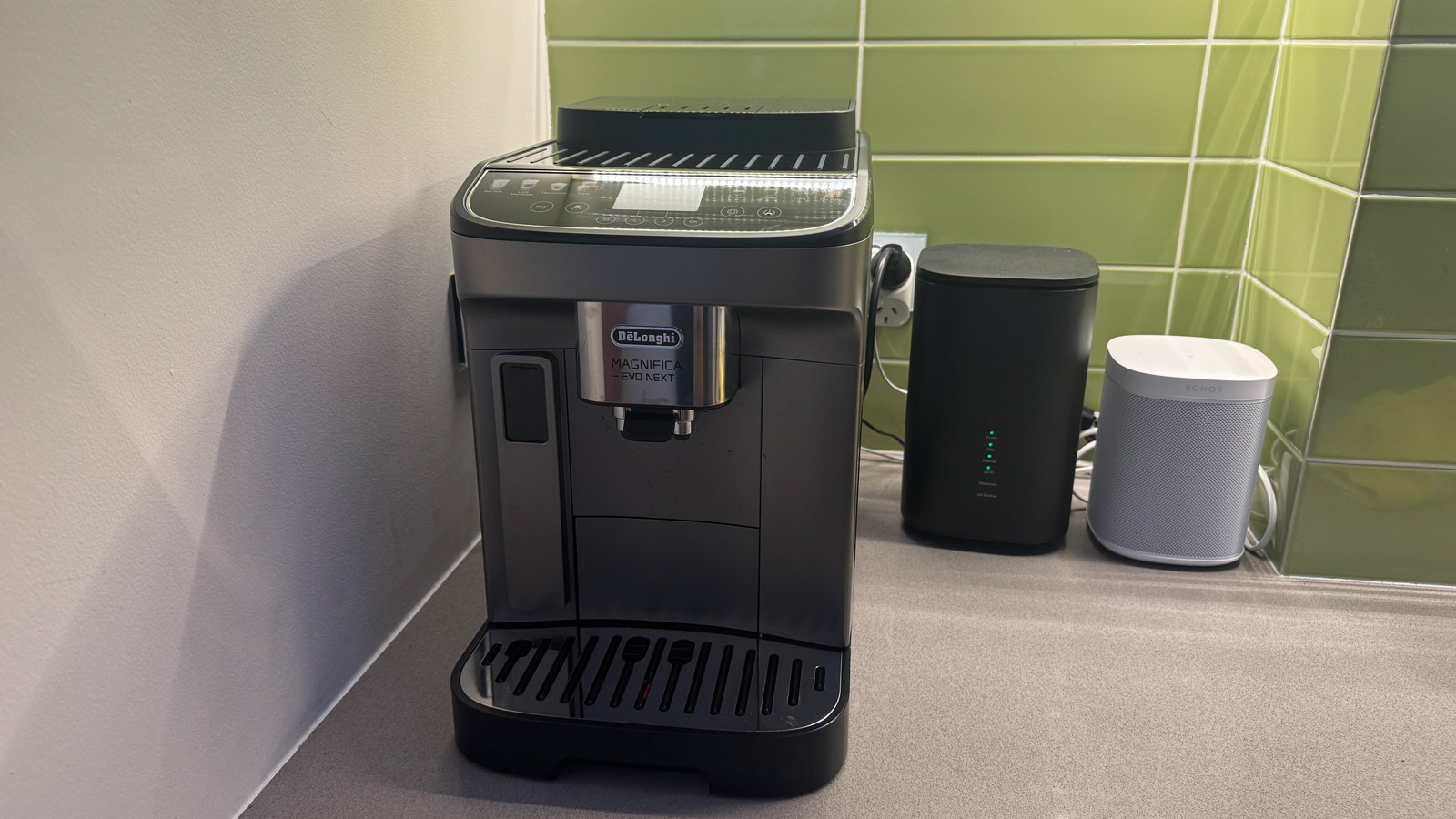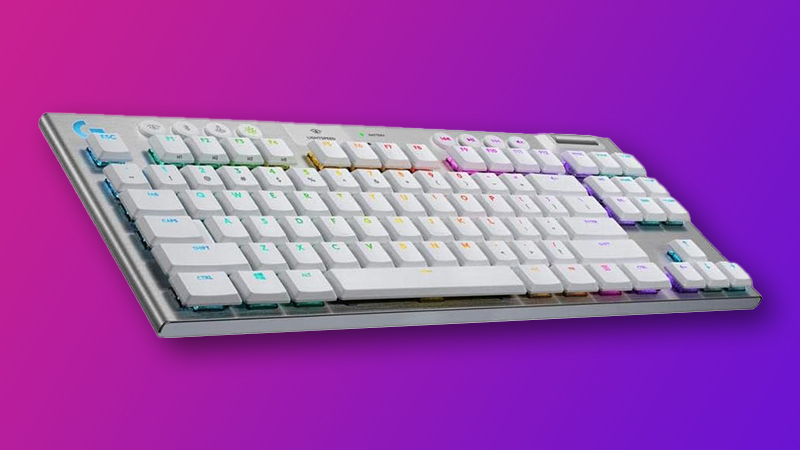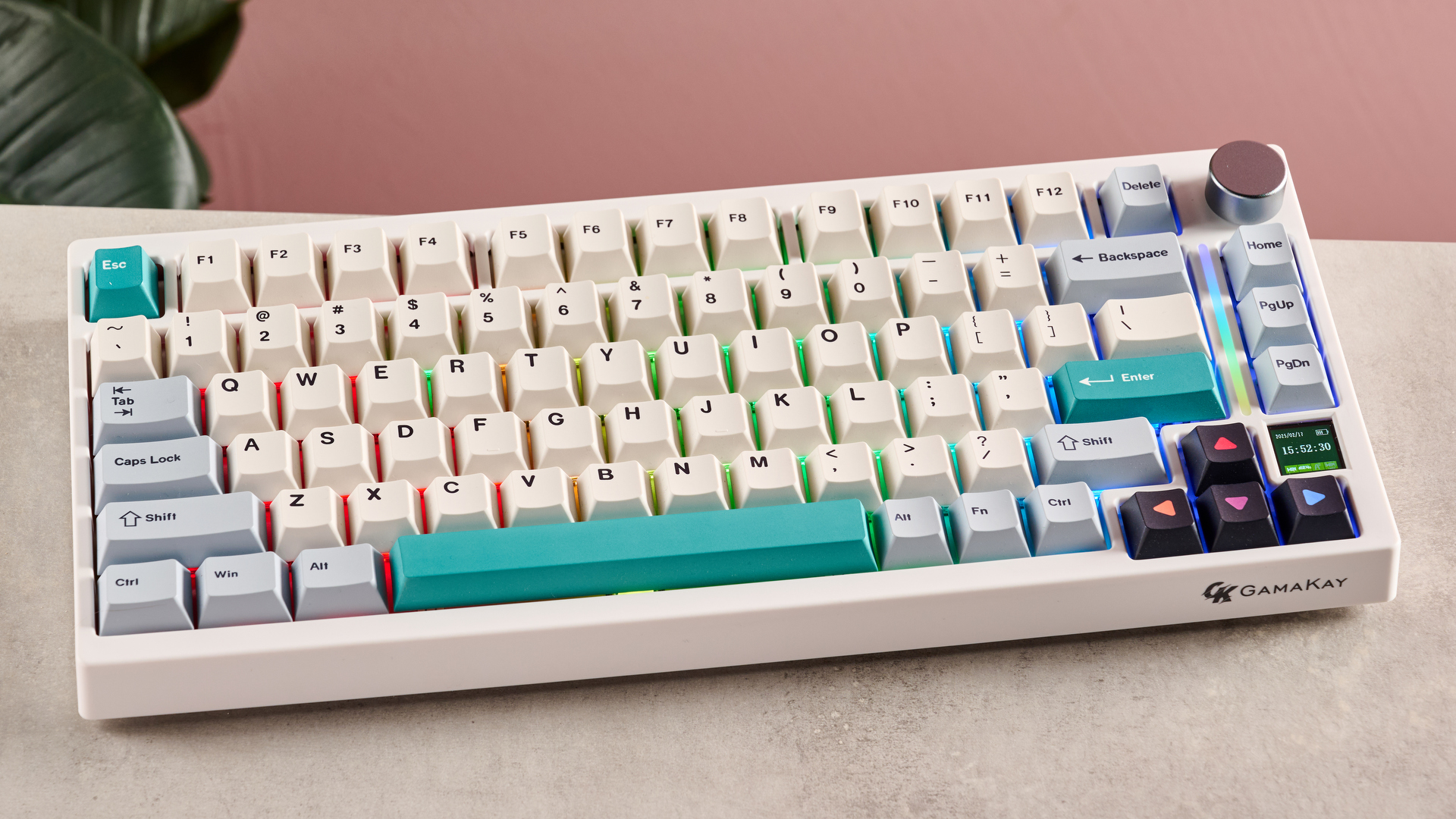I reviewed the BenQ PD3226G 32-inch 4K monitor for a month and there are two big reasons why creative professionals will love it
A high-quality 4K panel at an equally lofty price
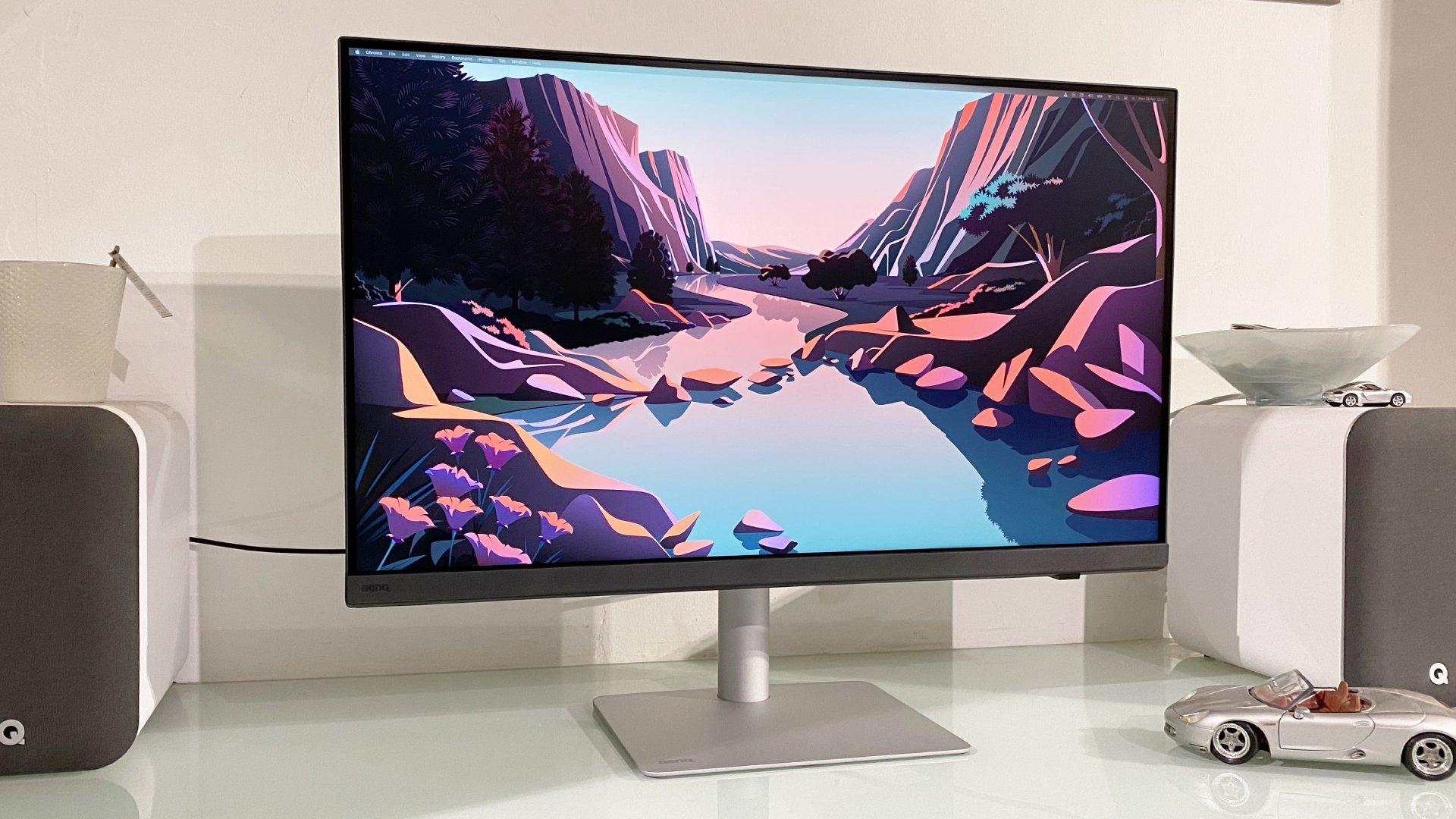
If you had to pick a single feature that's most commonly missing from premium monitors aimed at creative professionals, it's high refresh rate support. Not any more, thanks to the new BenQ PD3226G.
This 32-inch display ticks all the usual premium boxes, including elevated image fidelity from a 4K IPS panel, outstanding connectivity and a broad range of pro-friendly features that creators will appreciate, such as wide color support and Pantone validation. To that it adds 144Hz refresh where 60Hz used to be the norm.
You could argue that high refresh rates are irrelevant to many professional workflows. Largely, that's true. But it is essential for maximising responsiveness for use with some digital art tools, such as drawing tablets. Moreover, high refresh certainly has a major impact when it comes to smooth rendering and an all-round sense of computing slickness. It makes daily computing feel so much snappier.
BenQ also throws in a few unusual extras, including a very nifty IR remote control puck, that serve to sweeten the overall appeal of this gorgeous monitor and ensure that it ranks among the best business monitors. The main snag, however, is the price. At just under $1,300 or £1,100, this is a very expensive display, especially in the context of the entry-level DisplayHDR 400 certification it offers.
BenQ PD3226G: Design & features

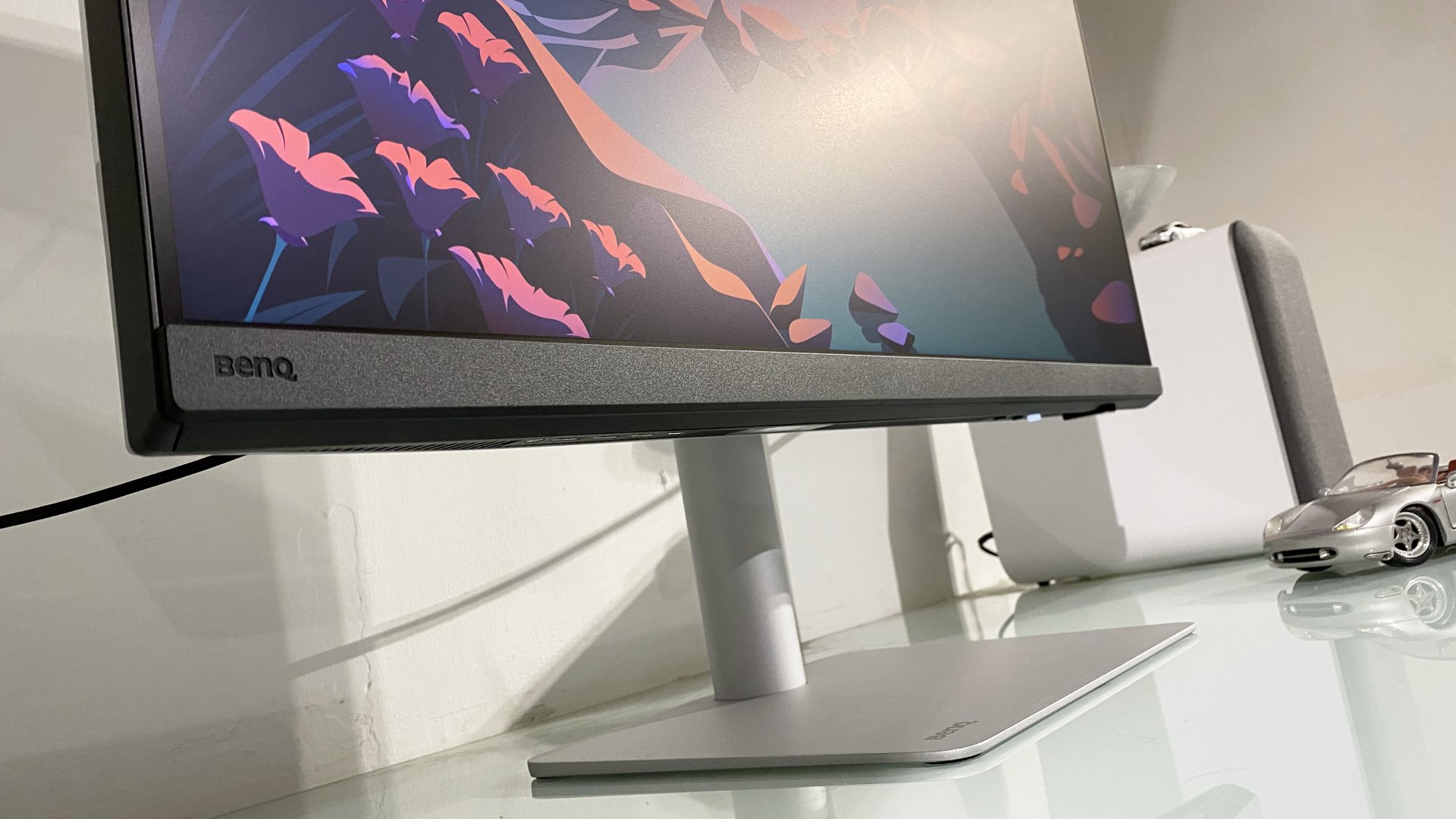
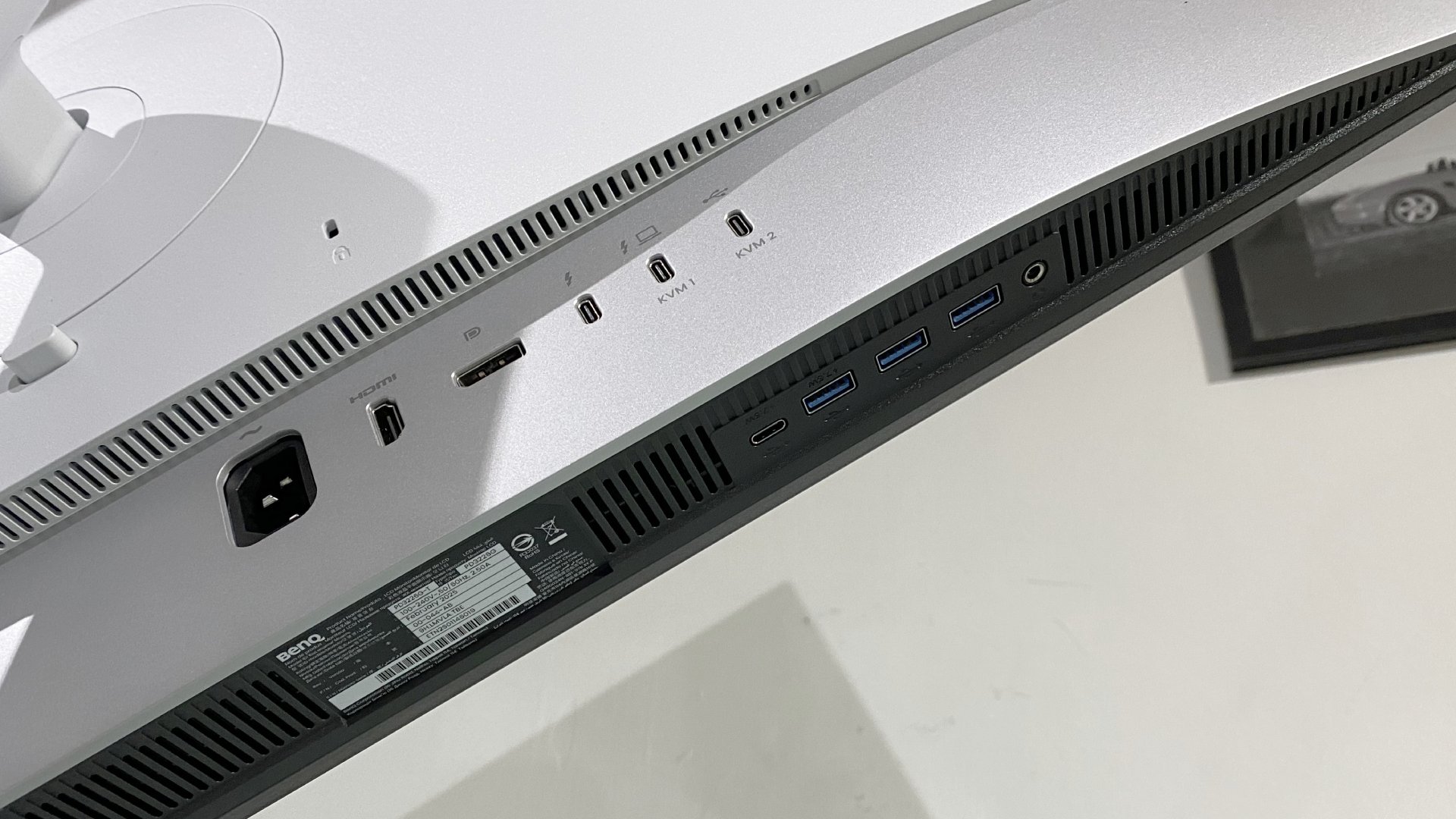
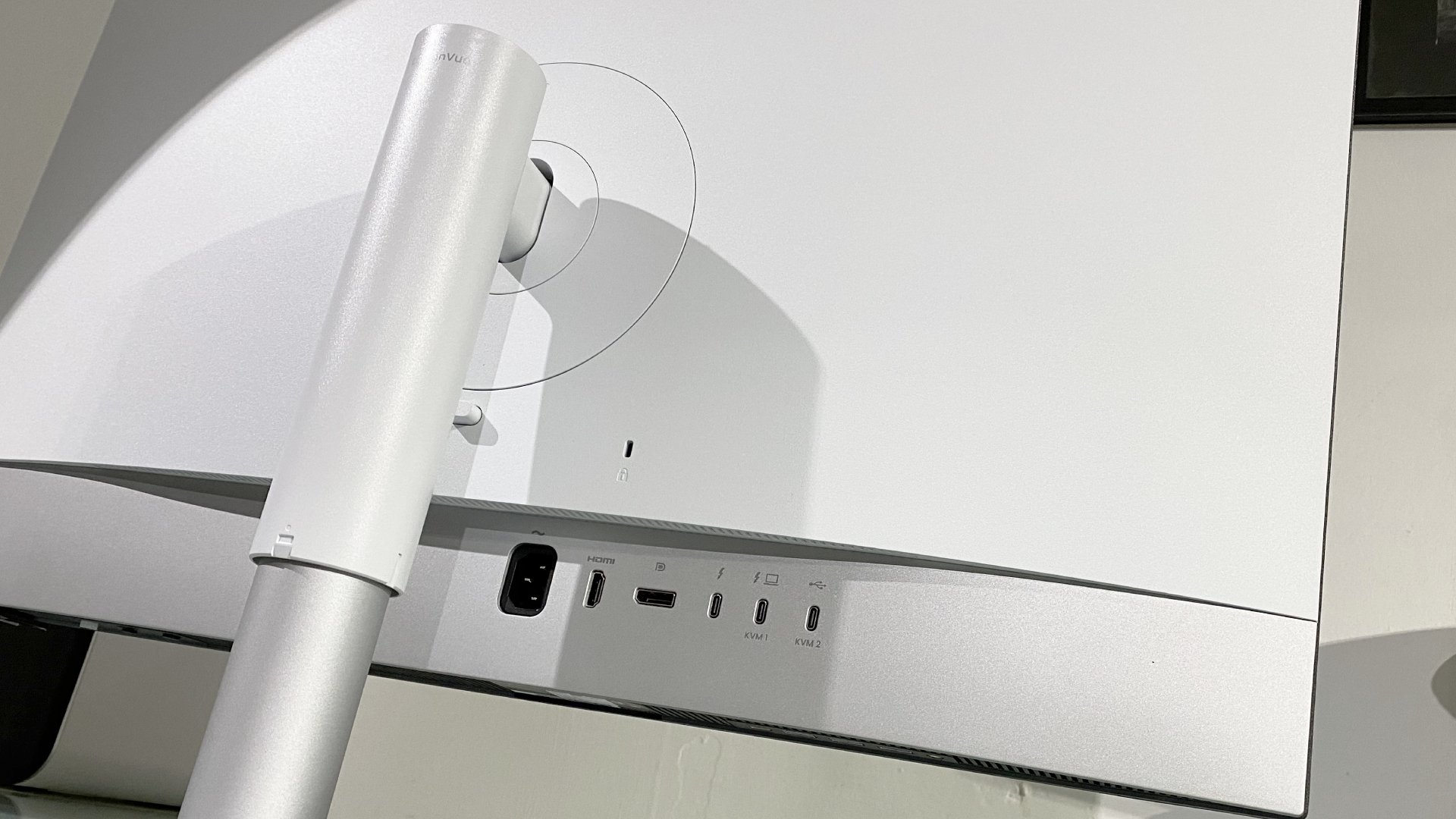
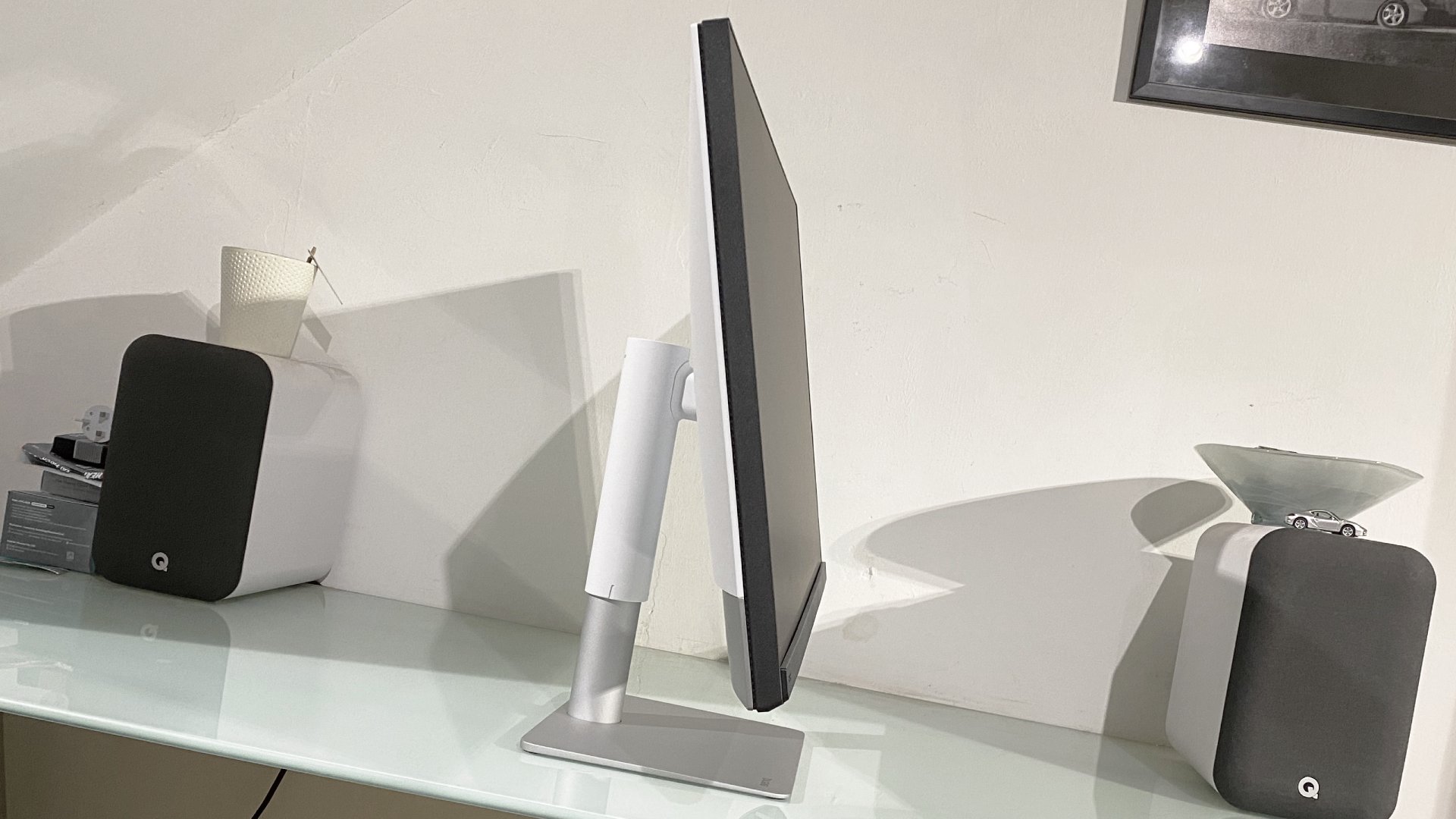
- Minimalist, slim-bezel design
- Comprehensive connectivity
- Wireless IR remote
Panel size: 32-inch
Panel type: IPS
Resolution: 3,840 by 2,160
Brightness: 400 cd/m2
Contrast: 1,200:1
Pixel response: 1ms GtG
Refresh rate: 144Hz
Colour coverage: 95% DCI-P3
HDR: VESA DisplayHDR 400
Vesa: 100mm x 100mm (bracket included)
Inputs: DisplayPort 1.4, HDMI 2.0 x1, Thunderbolt 4 / USB-C in with 90W PD
Other: Thunderbolt 4 / USB-C out USB-C hub, USB-C x2 in, USB-A x3, 3.5mm audio
BenQ's latest 32-inch 4K panel for creatives sticks with the company's typically slick and minimalist design vibe, including slim bezels on three sides of its IPS panel. The lower chin bezel is a little chunky. But overall, it's a well-built display and sits securely on a metal stand that offers a full array of adjustability, ensuring strong ergonomics.
Speaking of which, the main array of ports sit flush on the rear of the chassis, as opposed to being situated underneath and pointing downwards, making power, peripheral and display inputs super-simple to get at and plug in. You also get additional ports, including a USB-C data port, plus a USB-A hub and 3.5mm audio jack, situated on the bottom surface of the lower bezel.
While we're on the subject of connectivity, that's definitely a significant highlight of the BenQ PD3226G. For starters, there's Thunderbolt 4 support that offers sideways compatibility with USB-C for single-cable connectivity to a wide range of devices, most obviously laptops. That means you can both drive the display and charge your device with one cable, with power delivery up to 90W.
The Thunderbolt 4 aspect also means you can daisy chain a second monitor from the BenQ PD3226G, though support for that does depend on your computing device. By way of example, Apple's entry-level M1 and M2 chips as found in previous generation Apple Silicon MacBook Air models, only support a single external display and so can't exploit the PD3226G's daisy chaining ability.
To all that you can add KVM switch functionality and therefore support for connecting two computers to this display and sharing a single keyboard and mouse. Rounding out the main physical features is BenQ's third-gen control puck. This time around, it's wireless via IR and powered by a pair of triple-A batteries.
That's a real benefit compared to previous wired iterations of the control puck and helps keep desk clutter to a minimum. The puck itself is extremely slick and sports a tactile metal dial plus shortcut buttons. The dial can be set to control brightness, volume or contrast, while a range of other functions and presets can be accessed in a flash via the shortcut buttons. It's a very nice little extra.
BenQ PD3226G: Performance
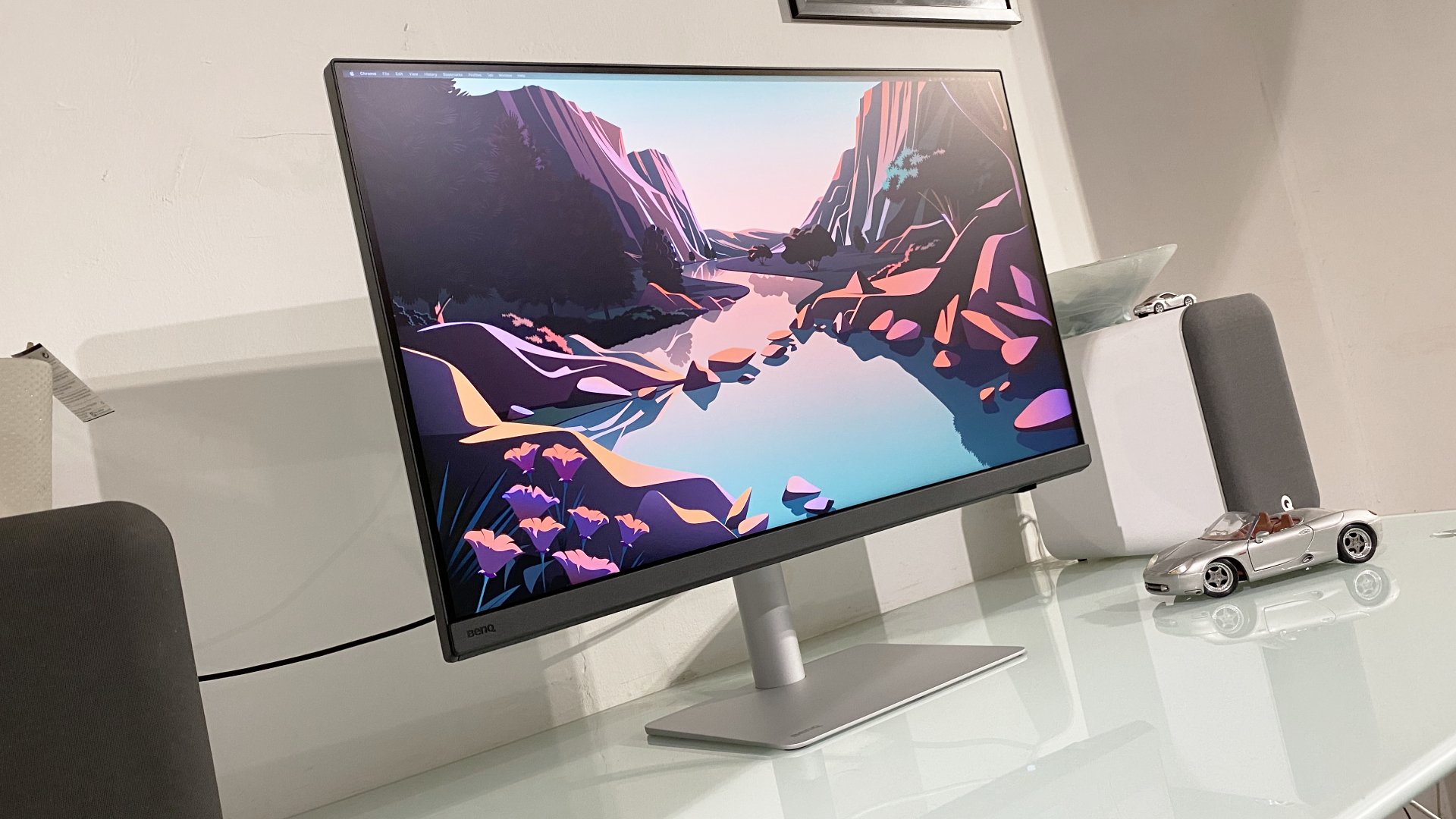
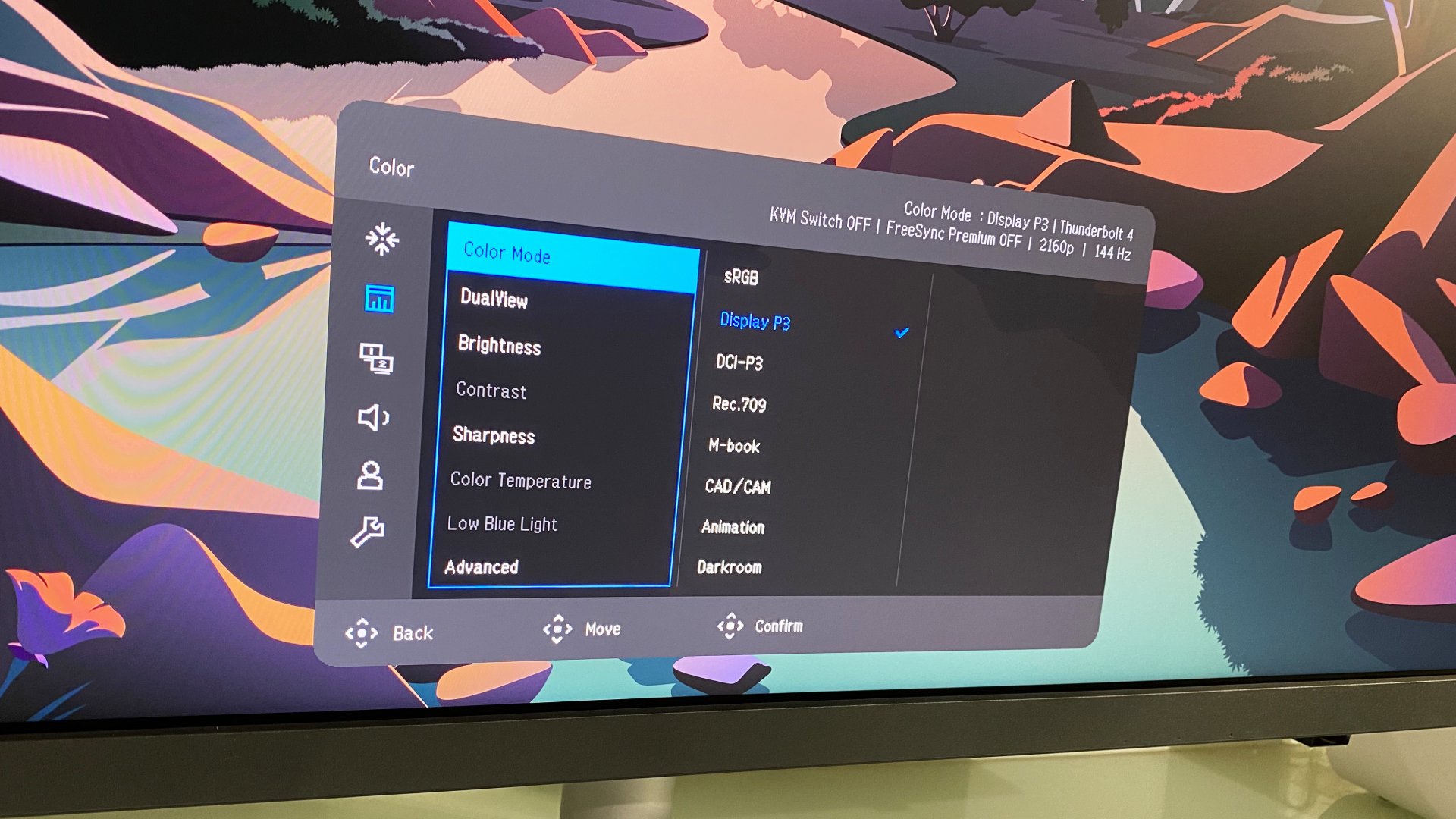
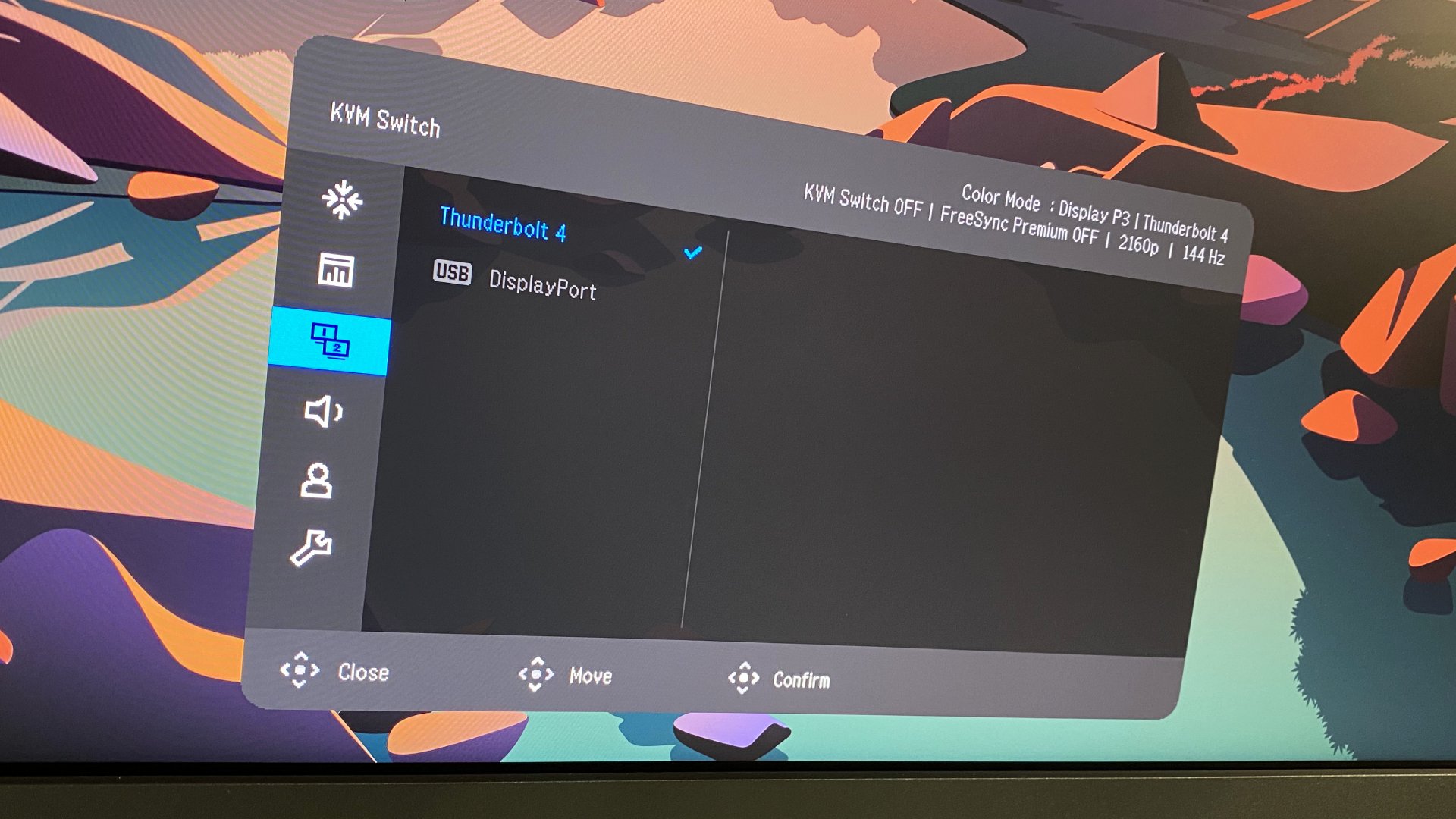
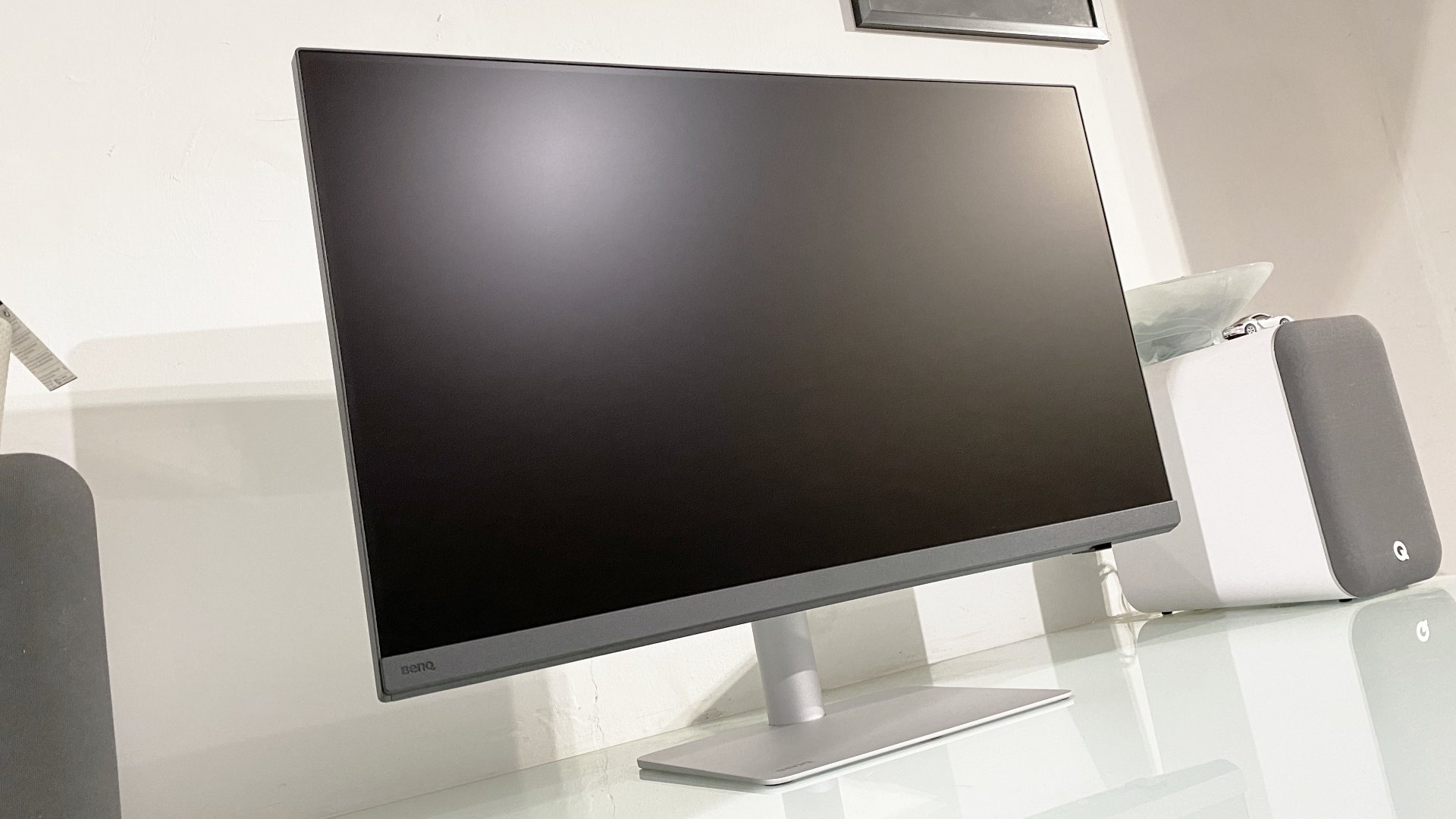
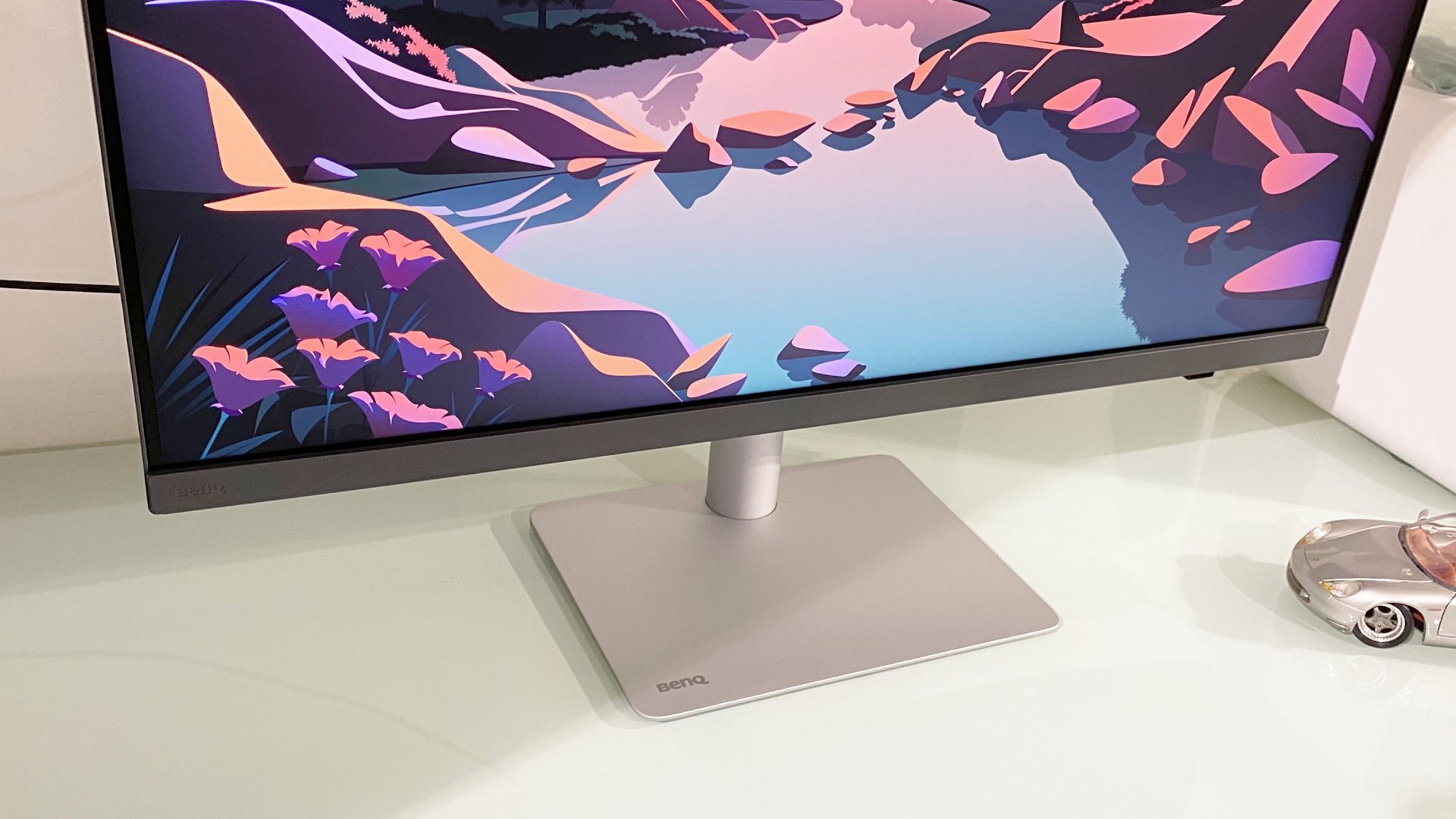
- Good factory calibration
- Excellent all-round image quality
- Only entry-level HDR support
Much of the BenQ PD3226G's specifications and therefore performance are pretty familiar. The 32-inch IPS panel delivers excellent all-round image quality, including 95% coverage of the DCI-P3 color space and factory calibration with Delta Es well below two.
Generally, it's a very sweet IPS panel that offers all the usual advantages of the 4K resolution, including plenty of desktop working space and decent pixel density for precise fonts and sharp image quality. It's not a true pro-grade panel for video production, for instance. But it is very well calibrated from the factory and makes for a super nice all-round monitor for creative workflows.
Where it separates itself from many similar displays aimed at creative pros, however, involves refresh rate. Instead of the usual 60Hz, you get 144Hz over both HDMI and DisplayPort, the latter including DisplayPort alt mode over the Thunderbolt 4 interface.
Now, 144Hz isn't directly relevant for most creative workflows. It's not required for image editing, nor the vast, vast majority of video editing. But for certain digital artwork tasks, notably those involving drawing tablets, high refresh really helps with visual responsiveness and accuracy.
It's also just a very nice thing to have, day-to-day. Once you're used to the slickness of 144Hz when scrolling web pages or just moving application windows around, you won't want to go back to 60Hz.
BenQ has also fitted the PD3226G out with lots of well-calibrated color space presets, including the core triumvirate of DCI-P3, sRGB and M-Book mode. The latter is a mode that's designed to match the factory calibration of Apple's MacBook laptops, though it's unclear how that differs from the standard P3 gamut that MacBooks run by default and is also offered separately by this BenQ.
As if that's not enough, this monitor is also Pantone Validated and Claman verified. So, it can be calibrated to an even higher precision for those workflows that demand it. Where it isn't so impressive is with HDR content.
You do get HDR400 support, but that's the most basic of HDR capability. There's no local dimming and the brightness peaks at a modest 400 nits. In other words, it's not a true HDR display and if you're looking for a screen to use in really bright ambient conditions, the PD3226G isn't the best choice.
BenQ PD3226G: Final verdict

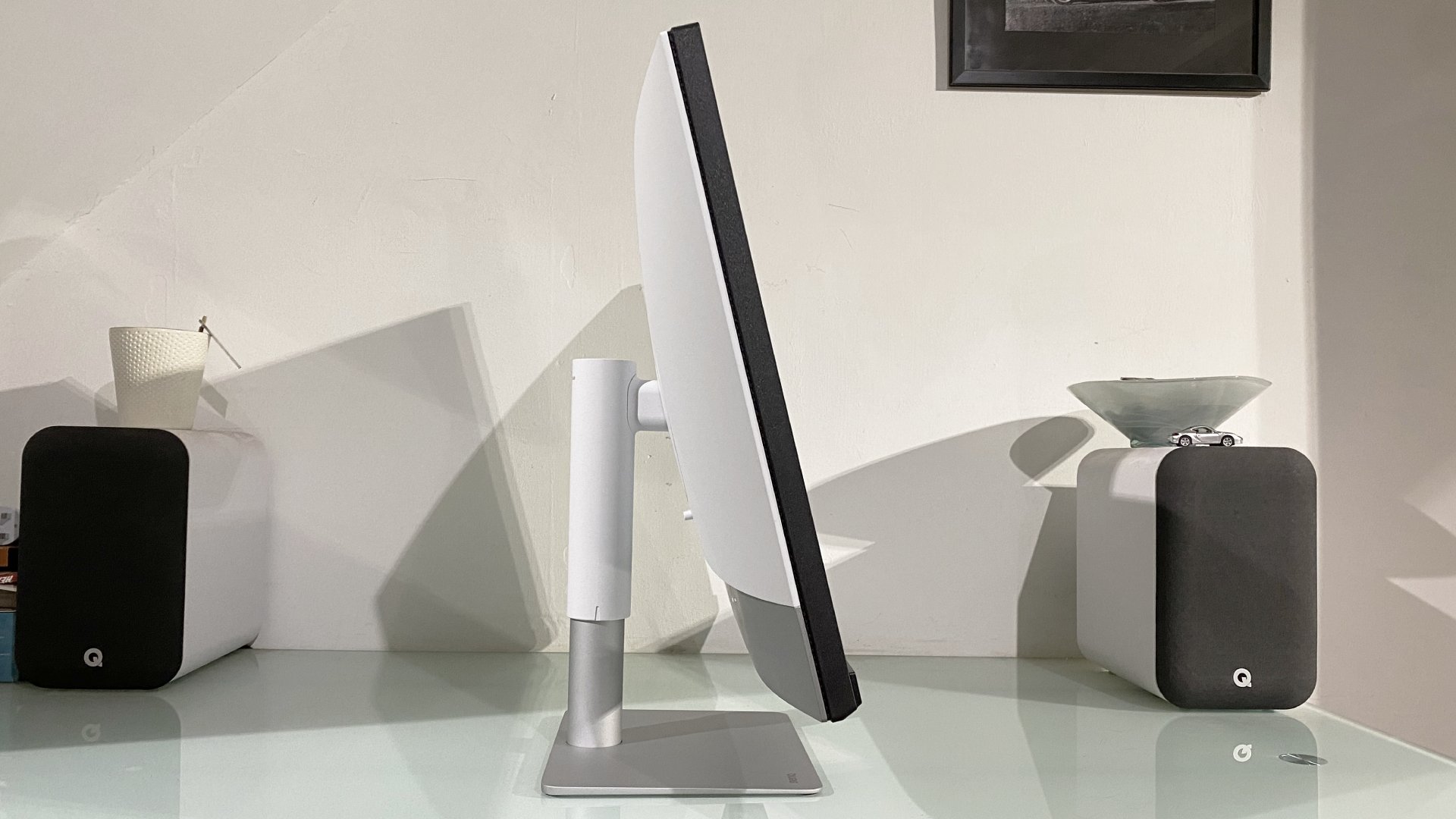
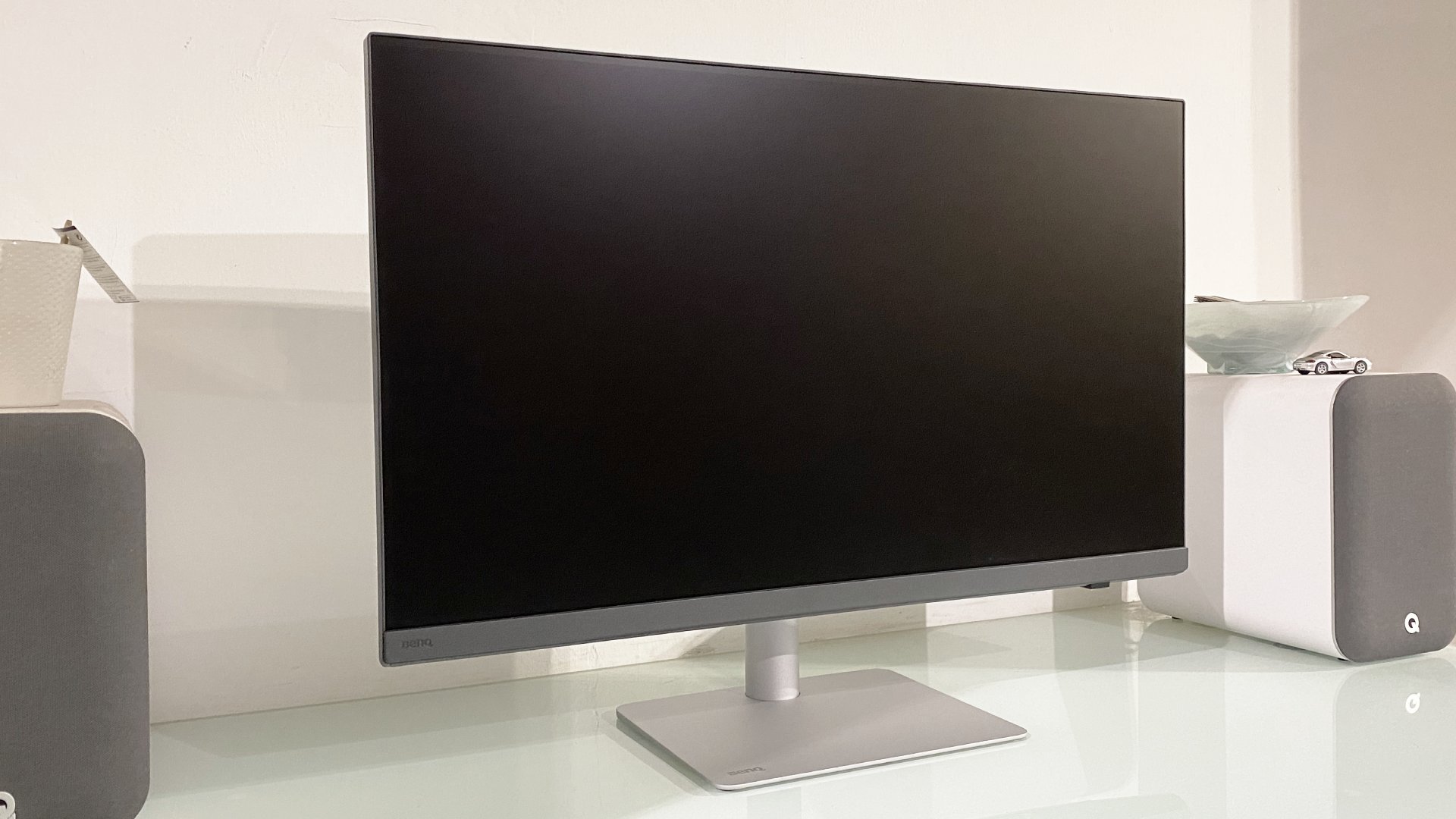
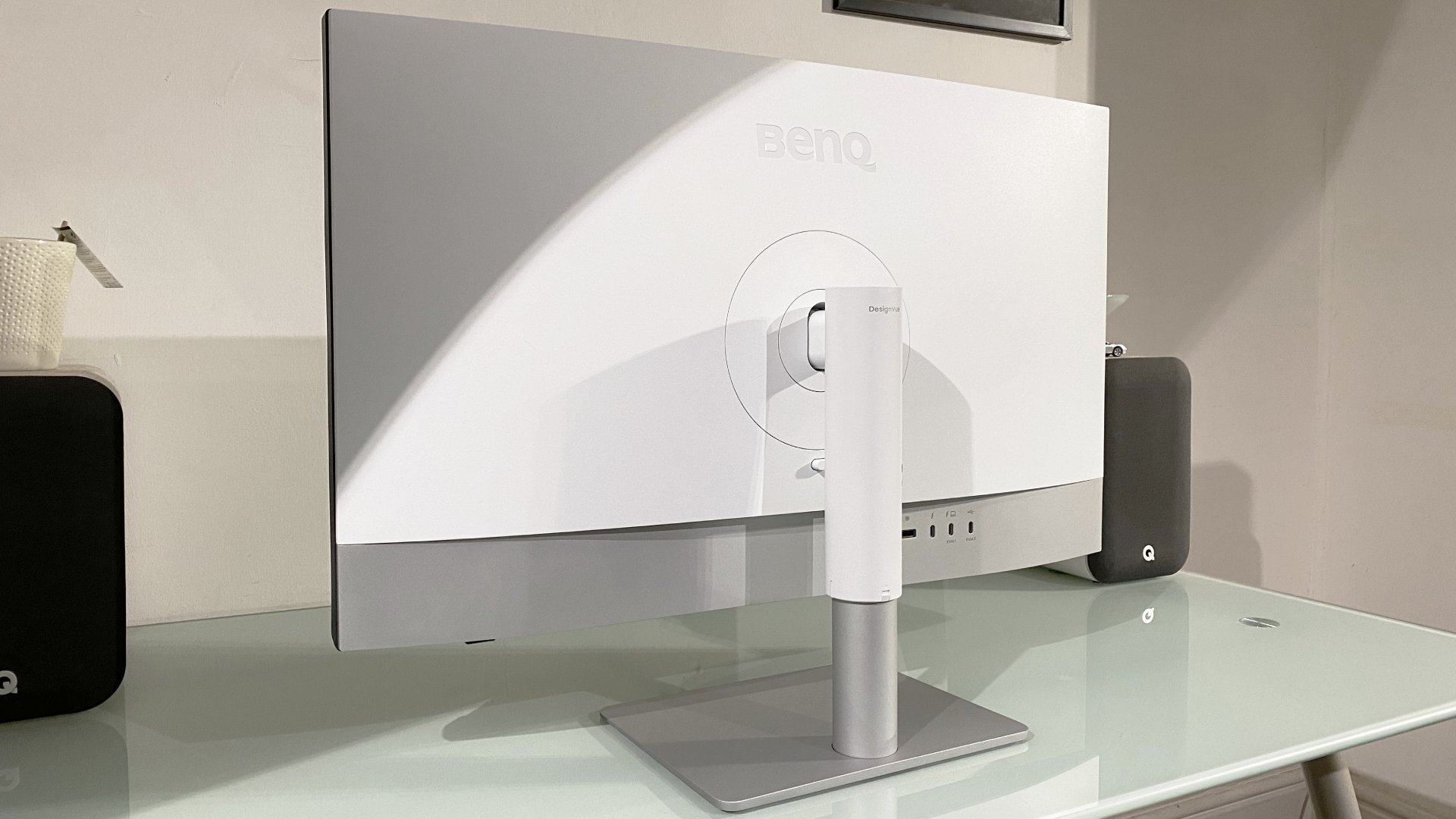
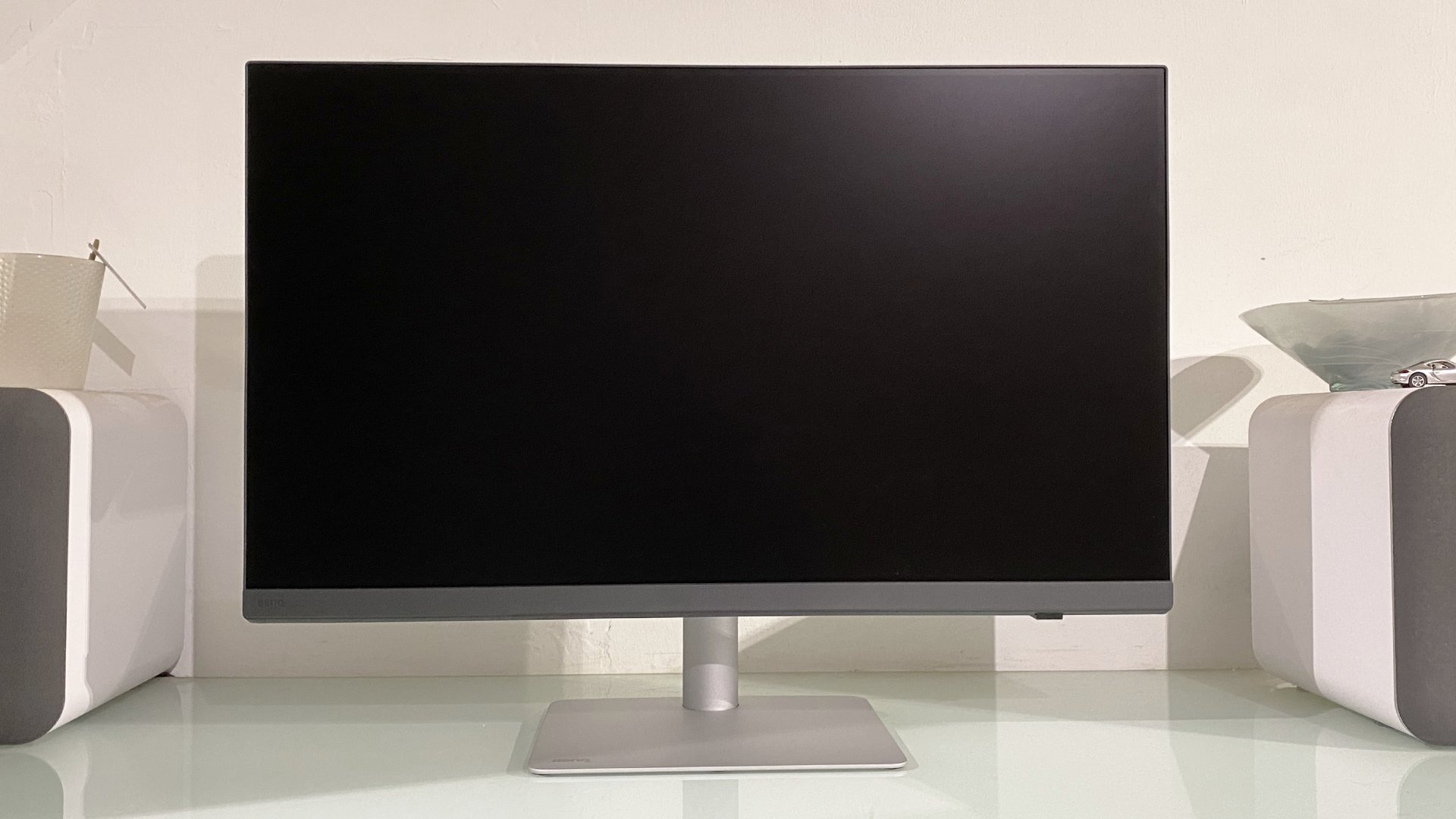
Do not dismiss the new BenQ PD3226G as a routine update to the brand's already very appealing range of displays for creative pros. This one is a little different.
For starters, it gets an upgrade to 144Hz refresh. Admittedly, that's not of direct benefit for most creative workflows. But it's a genuine upgrade for all-round responsiveness and day-to-day usability. Once you're used to high refresh, you won't want to go back to 60Hz. It's also a clear advantage for certain digital art workflows, notable in concert with drawing devices like tablets.
BenQ has also upgraded its control puck with this generation from wired to IR wireless. It sounds like a small change, but it makes for a much more usable and ergonomic remote control. Once again, if you've gotten used to BenQ's IR remote, it's a chore to return to fiddly little buttons under the screen bezel.
On top of all that, BenQ has included plenty of features that creative pros will love, including a wide range of color space presets and excellent factory calibration. This is a really nice IPS 4K display with lovely image quality.
Connectivity is another very strong point thanks to Thunderbolt 4 connectivity, plus daisy chain and KVM switch functionality. Really the only obvious weak point of the BenQ PD3226G involves HDR support. The DisplayHDR400 certification is very much entry level and means you're not getting a true HDR experience.
That latter point would be fine save for the notably premium price point. This is an extremely expensive display given that it's ultimately limited to SDR visuals. Of course, if HDR doesn't factor in any of your workflows, that won't be a deal breaker. But at this price point, local dimming and a bit more backlight punch probably wouldn't go amiss. That aside, BenQ is onto a winner with the new PD3226G.
For more displays for creative professionals, we've rounded up the best monitors for photo editing, the best monitors for graphic design, and the best monitors for video editing.
